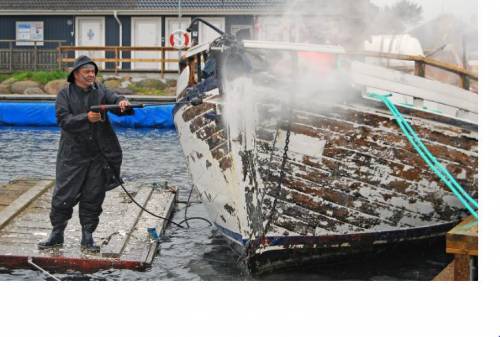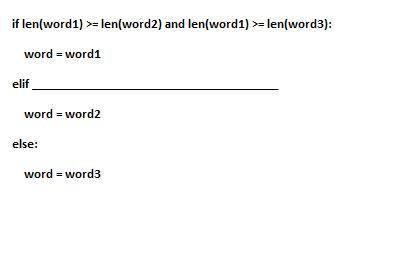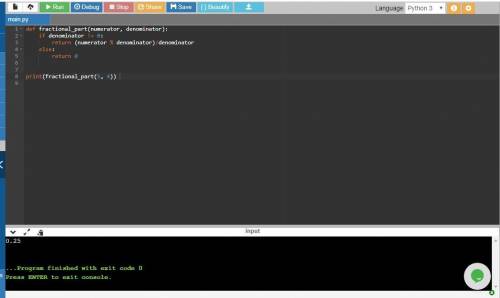Answer:
Multiple serverStep-by-step explanation:
The fact that illustrates productivity increase due to high-level automation is that one engineer can look after 10 to 20 servers (option 1).
• DevOps is a methodology for producing high-quality solutions using a quick response system.
High-level automation is used to achieve their objectives by incorporating technology into each step of the process.
• Improved IT technologies, artificial intelligence, and robotic technology, among other things, are used to automate this process.
. It has aided in the reduction of human efforts and the number of specialists working on a particular application component.
• Because of automation, a single engineer may manage several servers, resulting in enhanced productivity.
 3
3  12
12 The following code or the program will be used
Explanation:
def readFile(filename):
dict = {}
with open(filename, 'r') as infile:
lines = infile.readlines()
for index in range(0, len(lines) - 1, 2):
if lines[index].strip()=='':continue
count = int(lines[index].strip())
name = lines[index + 1].strip()
if count in dict.keys():
name_list = dict.get(count)
name_list.append(name)
name_list.sort()
else:
dict[count] = [name]
print(count,name)
return dict
def output_keys(dict, filename):
with open(filename,'w+') as outfile:
for key in sorted(dict.keys()):
outfile.write('{}: {}\n'.format(key,';'.join(dict.get(key
print('{}: {}\n'.format(key,';'.join(dict.get(key
def output_titles(dict, filename):
titles = []
for title in dict.values():
titles.extend(title)
with open(filename,'w+') as outfile:
for title in sorted(titles):
outfile.write('{}\n'.format(title))
print(title)
def main():
filename = input('Enter input file name: ')
dict = readFile(filename)
if dict is None:
print('Error: Invalid file name provided: {}'.format(filename))
return
print(dict)
output_filename_1 ='output_keys.txt'
output_filename_2 ='output_titles.txt'
output_keys(dict,output_filename_1)
output_titles(dict,output_filename_2)
main()
 9
9 x=float(input("Enter a number: "))
sub=(x-int(x))
print(sub)
Explanation:
Got it Right
 1
1 B ). When cleaning a vessel, use regular household detergents and cleaners.
Explanation:
Boat cleaning or vessel cleaning is a tedious job. It takes a lot of hard work to clean a vessel. We have to be careful while maintaining the vessel.
The products that we use to clean and maintain the vessels needs to chosen carefully. Many boat cleaning products have adverse effects on the marine life and aquatic animals. it also tends to pollute the water bodies.
These products may be corrosive in nature, toxic or poisonous.
So we must use the regular household detergents and cleaners to clean our vessels. The regular detergents do not cause any harm to the nature and the water bodies.
We can use phosphate free no detergent soaps which may include citrus based soap or vegetable based soaps.
Therefore, while cleaning or maintaining vessels , use the regular household detergents and cleaners.
Thus option (B) is correct.
Learn more :
link

understanding others first before starting to explain your own point
Explanation:
Stephen covey believes the key to effective communication is understanding others first before starting to explain your own point. Communication is an important skill in life, in which one must have a good character in order to communicate effectively.
 5
5 len(word2) >= len(word1) and len(word2) >= len(word3):
Question with blank is below
def longest_word(word1,word2,word3):
if len(word1) >= len(word2) and len(word1) >= len(word3):
word = word1
elif _________________________________________
word = word2
else:
word = word3
return word
print(longest_word("chair","couch","table"))
print(longest_word("bed","bath","beyond"))
print(longest_word("laptop","notebook","desktop"))
print(longest_word("hi","cat","Cow"))
Explanation
In line 1 of the code word1, word2, and word3 are the parameters used to for the defining the longest_word function. They will be replaced by 3 words to be compared. The code that is filled in the blank is len(word2) >= len(word1) and len(word2) >= len(word3): It is a conditional statement that is true only if the number of characters in the string of word2 is greater than or equal to word1 and word2 is greater than that of word3 .

Here is the fractional_part() function:
def fractional_part(numerator, denominator):
if denominator != 0:
return (numerator % denominator)/denominator
else:
return 0
Explanation:
I will explain the code line by line.
The first statement it the definition of function fractional_part() which takes two parameters i.e. numerator and denominator to return the fractional part of the division.
Next is an if statement which checks if the value of denominator is 0. If this is true then the function returns 0. If this condition evaluates to false which means that the value of denominator is not 0 then return (numerator % denominator)/denominator is executed. Now lets see how this statement works with the help of an example.
Lets say the value of numerator is 5 and denominator is 4. (numerator % denominator)/denominator will first compute the modulus of these two values. 5 % 4 is 1 because when 5 is divided by 4 , then the remainder is 1. Now this result is divided by denominator to get the fractional part. When 1 is divided by 4 the answer is 0.25. So this is how we get the fractional part which is 0.25.
The program with output is attached.

 3
3 
It will provide an instant answer!
